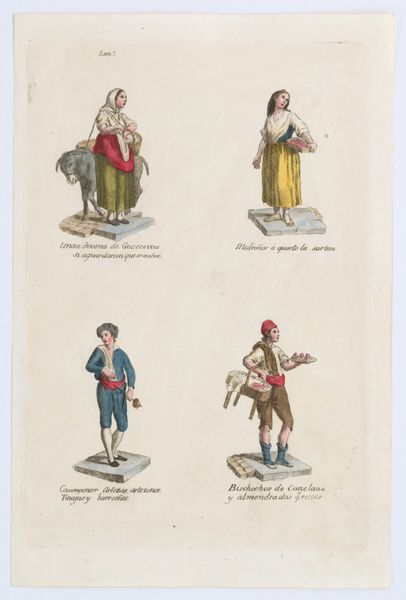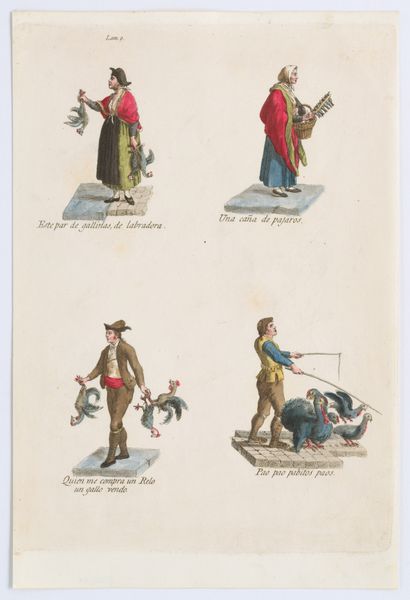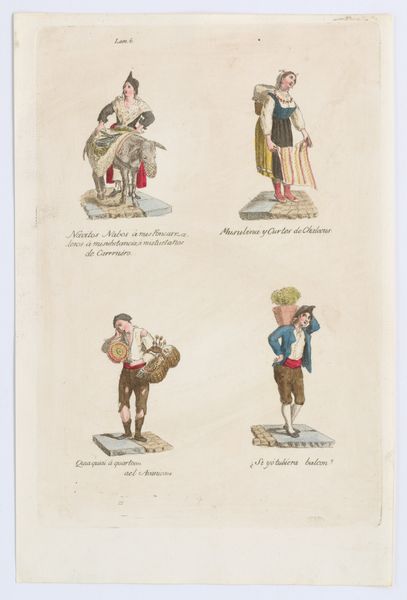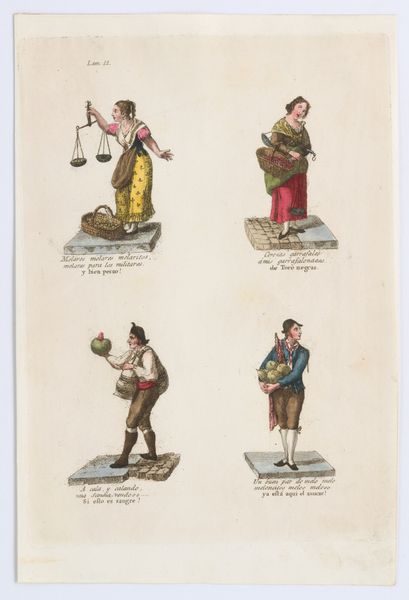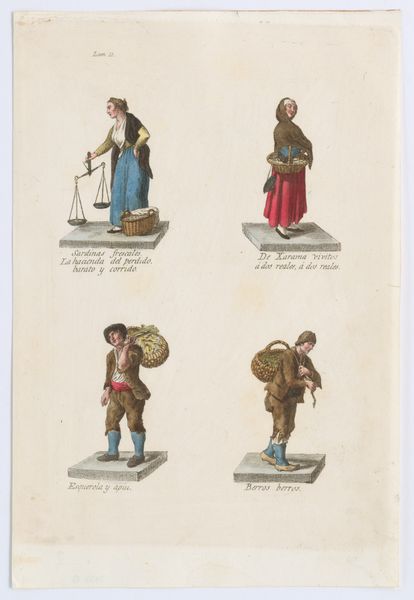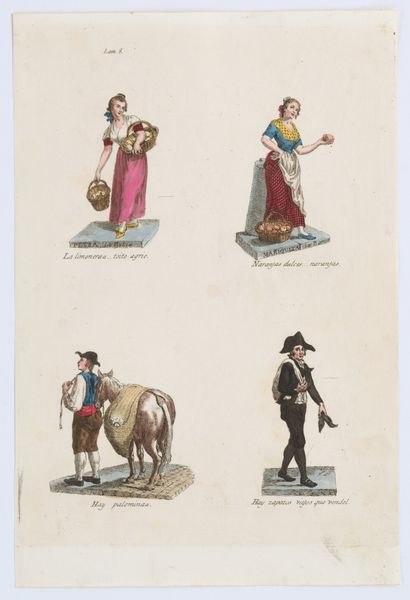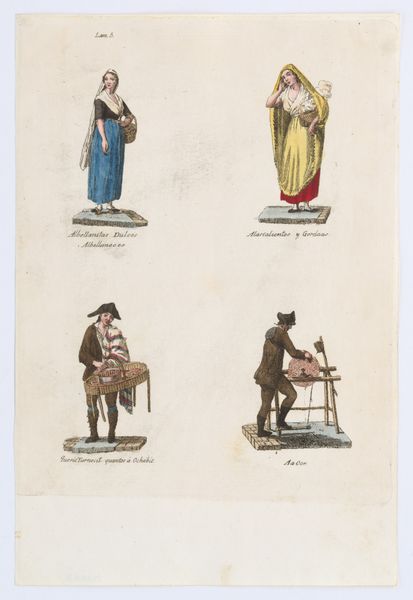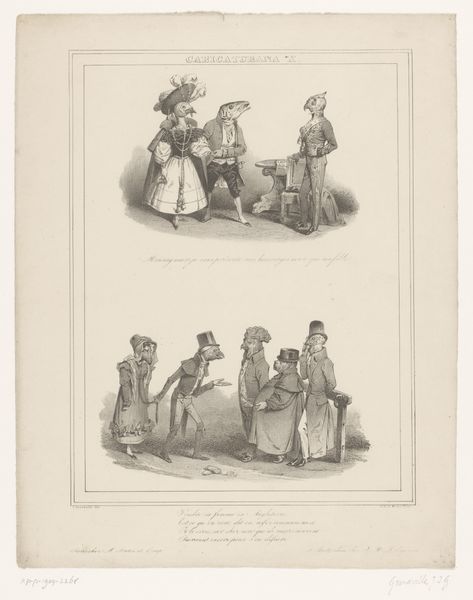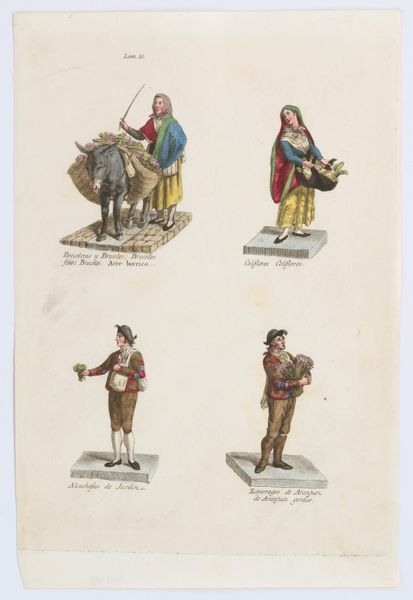
Plate 14: four street vendors from Madrid selling pots and pans, olives etc, from 'Los Gritos de Madrid' (The Cries of Madrid) 1809 - 1817
0:00
0:00
drawing, coloured-pencil, print
#
portrait
#
drawing
#
coloured-pencil
# print
#
figuration
#
coloured pencil
#
romanticism
#
genre-painting
Dimensions: Sheet: 11 13/16 × 7 7/8 in. (30 × 20 cm)
Copyright: Public Domain
Editor: This is Plate 14 from ‘Los Gritos de Madrid’ by Miguel Gamborino, created between 1809 and 1817. It’s a print made using colored pencils. I'm struck by how each figure, depicting a different street vendor, is almost presented as a character in a play. What story do you think it tells? Curator: Well, these aren't just any characters. Think of Madrid at this time – a city undergoing immense social and political change due to the Napoleonic Wars. Gamborino’s print, and the series as a whole, participates in constructing a collective identity rooted in its labor force, and reminds us of Spain's cultural identity amid French occupation. The street vendors shown here offer snapshots of daily life; each occupation helps support Madrid’s society. Do you see how these figures are placed? Editor: They're each on their own little pedestal. It makes them seem both important and… isolated? Curator: Exactly! Gamborino isolates and elevates them at once. It’s about monumentalizing these "common" folk who, en masse, help form Madrid’s cultural tapestry. Notice too the level of detail given to their tools and goods – the pots, the olives. These objects symbolize the very lifeblood of the city's economy and, consequently, its resilience during wartime. Consider what it means to visually celebrate such ordinary occupations during times of immense upheaval. How does that impact the perception, or reception, of labor itself? Editor: It almost feels like a form of social documentation, or even resistance? Highlighting the people and jobs that keep a society going when everything else is falling apart. Curator: Precisely! And the placement within a museum setting does what to those ideas? The prints remind us how art and social forces always shape the way we see the world and each other. Editor: That's amazing. I never thought about Romanticism extending to such practical representations of working-class individuals. I'll definitely look at social themes differently from now on! Curator: I am so happy to hear you say that. I, on the other hand, never fail to consider the relevance of images like this in understanding current socioeconomic situations. It can really provide some fascinating contemporary perspective!
Comments
No comments
Be the first to comment and join the conversation on the ultimate creative platform.
